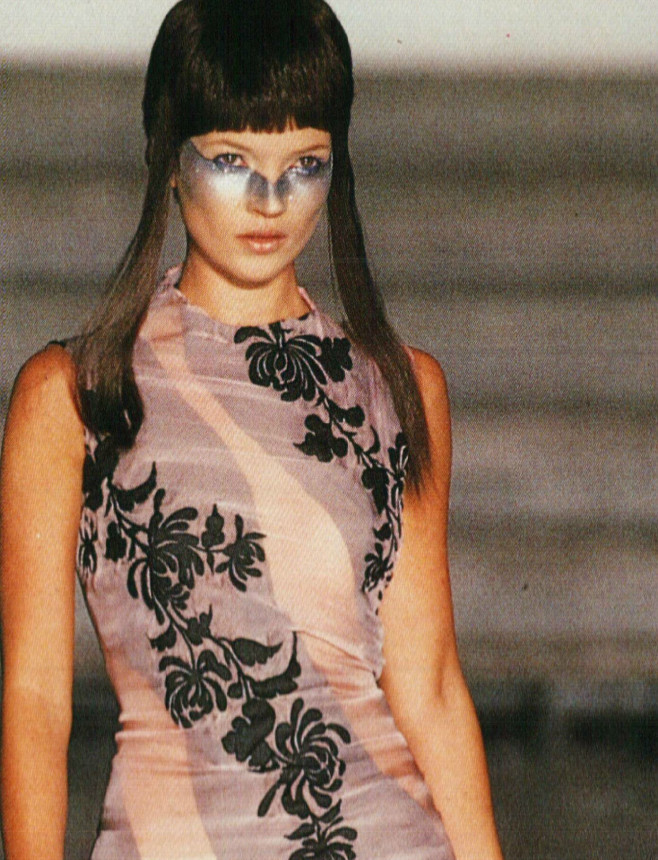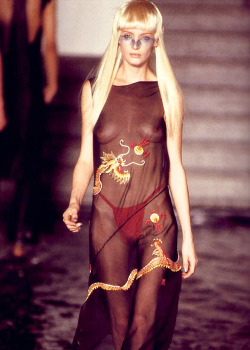McQueen continued his
streak of success with his S/S 1997 collection, La Poupée (which can be seen in full here) – a collection inspired by the work of twisted German
puppeteer Hans Bellmer, renowned for his freaky female mannequins who were
often contorted or deformed. Considering that Bellmer’s work was designed to
oppose Nazi definitions of beauty, the fact that McQueen was inspired by the
artist seems natural; both tend to work within the realm of the grotesque and
the mutated, and both take pleasure in rebellion.
Staying true to his signature showmanship, the
designer crafted an extraordinary set which featured a flight of steps leading
down to a flooded runway. The models all had blunt fringes cut to highlight
cheekbones which were almost artificial in their severity, whilst their eyes
were surrounded by bold sweeps of metallic silver eyeshadow. Many of the girls
also wore heavy facial jewellery in the form of protruding spikes or silver
cylinders which orbited the face, whereas the African model Debra Shaw created
the most memorable imagery of the show by attempting to walk the runway whilst
shackled with metal body jewellery. As usual the press rushed to create
controversy, stating that a black woman in chains had to represent slavery – as
usual the press were wrong, and McQueen chose the outfit because he liked the
delicate way that it made the model walk, somewhere between demented and
beautiful.
In terms of clothing itself, the clothing itself
was different from previous collections in the sense that the adjective ‘pretty’
actually seems to be one of the most appropriate. Instead of using monochrome
and blood red, the second half of the show was dominated by a startlingly
feminine colour palette – dusty pink mixed with light yellow and lilac,
creating a serene canvas onto which McQueen sprinkled smatterings of sequins
and jewels. The show also saw the debut of a gorgeous oriental fabric – light
pink silk, embossed with large florals and often worked into looks with
exaggerated proportions such as a stiffly-tailored evening jacket or an
oversized collar.
Overall, the collection was a true progression
for McQueen and its elaborate set was a clear indication of a budget which was
slowly increasing. The models used were getting higher in profile (Kate Moss,
Kristen McMenamy), and every show seemed to be both more elaborate and more
accessible than its predecessor. The collection also came around the same time
that McQueen was chosen as the new creative director of Givenchy, a career
highlight that elevated the designer’s rank immediately. This collection is an
accurate representation of this stage of his career, in the sense that it was
the perfect marriage between his love of spectacle and his eye for accessible
design. It was perhaps less innovative than some of his previous work, but it
was real proof that, when given a big budget and free rein, McQueen can always
come up with something spectacular.





No comments:
Post a Comment